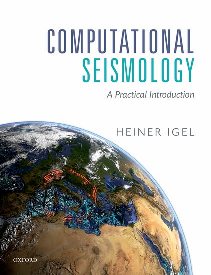Course material for the Seminar on Advanced Methods Winter Term 2016
This course aims at discussing advanced computational methods in seismology, extending the basic methods encountered in the lecture on computational seismology in the summer term. In addition we learn (in more depth) some basic tools for code development (github, Jupyter notebooks). Some of the methods we will discuss are 1) advanced finite-difference concepts (optimal operators, summation by parts operators), 2) finite-volume methods, 3) discontinuous Galerkin methods, and others.
Participating students will prepare basic theoretical concepts, simple python-based notebooks, and possibly report on some applications of methodologies in geosciences.
Wednesdays 11:00-12:30, begin November 2, 2016 Room C111
| Date | Topic | Presenters | Misc |
|---|---|---|---|
| Nov 2 | GitHub | T. Megies | Introduction, Applications |
| Nov 9 | Optimal FD operators (Geller) | T. Taufiqurrahman | Notebook ready |
| Nov 16 | SE on planets | R. Joshi | Notebooks in seismolive or other |
| Nov 23 | FD summation by parts | K. Duru | New notebooks? |
| Dec 2 | Special Seminar Supercomputing in Earth Science | H. Igel, T. Thiel | 18:00 Luisenstr. 37 C106 |
| Dec 7 | FE linear | B. Chow, A. Verna | Notebooks seismo-live |
| Dec 14 | FV method | S. Anger, H. Khoshkhoo | Notebooks seismo-live |
| Jan 25 | DG method | A. Rijal, S. Singh | Notebooks seismo-live |
| Feb 1 | Parallel programming | D. Vargas | New notebook with PythonMPI |
| Feb 8 | Parallel programming Part 2 | D. Vargas | New notebook with PythonMPI |
- Optimal Operators (Geller), update notebook with analytical solution, quantify accuracy
- Introduction to homogenization, develop simple notebook with example for acoustic wave equation
- Simple flux schemes in the finite-volume method, test on extremely heterogeneous case, compare with finite-difference method
- Improved finite-difference techniques (summation by parts), development of simple 1D and/or 2D notebooks
- Octree meshes for boundaries, develop notebook from Matlab code (Varduhn)
- The discontinuous Galerkin method, basic theory, fluxes, heterogeneous case, applications
- Parallel programming with (python-) mpi, simple examples
- Simulation of planetary objects (e.g. Instaseis)
